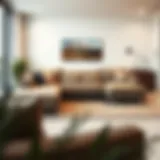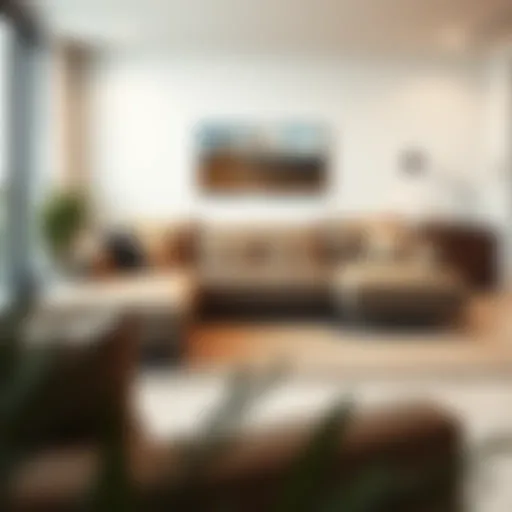Mastering Wicker Replacement for Furniture Care
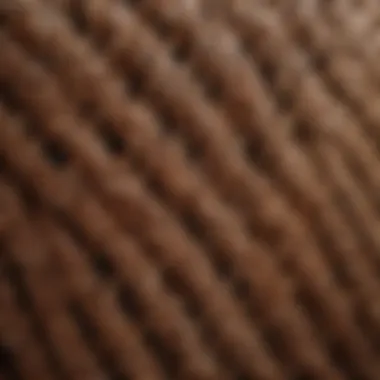

Intro
Wicker furniture has a storied past, often tied to tradition and craftsmanship. Yet, like any beloved item in our homes, it requires some tender loving care over time. Whether you've inherited a beautiful piece or invested in a sleek modern design, understanding wicker replacement can make a world of difference. This process is not just about aesthetics; it touches on durability and maintenance.
By delving into the nuances of wicker replacement, we invite homeowners, designers, and DIY enthusiasts alike to explore a comprehensive approach to preserving and restoring their wicker furniture. In this article, you'll find insights that cover everything from key materials used in replacements to effective techniques that ensure a seamless transition. So, roll up your sleeves, and let’s get into the intricate world of wicker replacement.
Understanding Wicker Work
When it comes to the world of furniture, wicker work stands out like a beacon of creativity and craftsmanship. This section seeks to unravel the intricate tapestry of wicker, shedding light on its history, material choices, and its significance in modern design.
Wicker furniture has been a staple of both indoor and outdoor spaces. Its light weight and stylish aesthetic make it appealing. Homeowners, designers, and even retailers find great value in understanding wicker work. Not only can it enhance the visual appeal of a space, but it also plays a significant role in durability and maintenance. Knowledge about wicker allows individuals to make informed decisions when it comes to purchases or repairs.
Beyond aesthetic considerations, understanding wicker work involves appreciating the labor-intensive process behind it. Many people are unaware that wicker weaving is an ancient craft, deeply rooted in different cultures around the world. This makes it not just a functional addition to interiors but also a piece of art with historical significance.
Historical Overview of Wicker
Wicker has existed in various forms for thousands of years, tracing back to ancient civilizations. The Egyptians, for instance, used natural materials such as reeds and palm fronds to produce baskets and furniture. This historical context reveals a timely relationship between humans and nature. By weaving natural fibers, artisans created not only utility but also beauty within their homes.
Through the ages, wicker's popularity has waned and surged, influenced by culture and availability of materials. By the time we reached the Victorian era in the 19th century, wicker was all the rage. People began to appreciate its intricate designs and comfy nature. Nowadays, wicker is popular not just in homes but even in cafes and public spaces, making it a timeless choice.
The Materials Used in Traditional Wicker
Delving into the materials used in traditional wicker work unearths a rich plethora of choices.
- Rattan: A common choice, rattan is a climbing palm native to tropical regions. Its flexibility makes it ideal for weaving, and it has a beautiful, natural finish.
- Reed: Often utilized for seat weaving, reed has seen a resurgence in popularity due to its affordability. This material provides a lightweight yet sturdy base for wicker furniture.
- Willow: In Europe, willow is traditionally used for making baskets and furniture. Its pliability lends itself well to intricate designs.
- Bamboo: Gaining traction in modern design, bamboo is favored for its eco-friendliness and strength. It’s a renewable resource, making it a good choice for sustainable wicker pieces.
Understanding these materials not only opens doors for better selection when replacing wicker but also connects buyers with the legacy of craftsmanship. People are not just purchasing furniture; they are participating in a narrative that speaks to the innovation and artistry of generations past.
"The essence of wicker is a blend of usability and art, offering functionality while showcasing skill."
The Importance of Wicker Maintenance
Maintaining wicker furniture is not just about keeping appearances. It is also about preserving the integrity and functionality of the pieces. Wicker items, having been woven from pliable materials like bamboo, rattan, or even polymer, take on the wear and tear of daily use. If left unchecked, minor damages can spiral into much larger issues, leading to significant replacement costs. Regular maintenance can save time and money while also extending the life of your beloved pieces.
The benefits of maintaining wicker furniture are numerous:
- Durability: Regular cleaning and treatment can stave off deterioration from weather and pests.
- Aesthetic Appeal: A well-maintained piece adds charm and character to a space, often becoming the focal point in a room.
- Resale Value: If you ever decide to part ways with your furniture, a well-maintained piece can fetch a higher price.
- Comfort and Functionality: Regular checks ensure that the furniture is safe to use, eliminating potential hazards such as sharp edges from fraying wicker.
Thus, addressing wicker maintenance is a proactive step for homeowners and designers alike.
Identifying Damage in Wicker Furniture
Damage in wicker furniture often reveals itself in subtle ways that may go unnoticed, particularly for those unfamiliar with the material. Things like loose strands, discoloration, and structural deformities are all telltale signs of distress. Not all damages require immediate replacement, yet they deserve attention before they worsen.
To spot damage effectively, consider looking for:
- Fraying Strands: When the fibers begin to unravel, this can lead to further deterioration.
- Loose Weaves: If the wicker appears slack or is coming undone, it can compromise the structure.
- Discoloration or Stains: These can indicate water damage or mildew, diminishing the visual appeal.
- Structural Weakness: If a chair or table feels unstable, it may be time for repairs or outright replacement.
In many cases, these damages can be either repaired or mitigated with appropriate attention, but if neglected, they could lead to more extensive damage.
Signs That Replacement is Necessary
While minor repair works can do wonders, there comes a time when the damage is so advanced that replacement becomes the only effective remedy. Knowing when to replace wicker furniture is crucial in upholding the aesthetics and safety of your home environment. Here’s how to tell if it’s time to retire a piece:
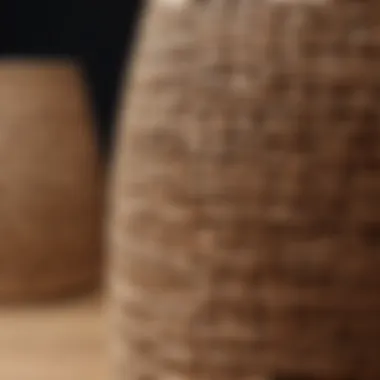

- Extensive Fraying: If large sections of wicker are frayed beyond simple repair, the structural integrity is at risk.
- Severe Breaks or Cracks: Noticeable breaks in the frame or weaving are often a red flag that safety and function have been compromised.
- Pest Infestation: Beyond all else, a wicker piece that houses pests isn't just unsightly – it poses a health risk.
- Constant Repair Needs: If you're putting more money into repairs than the item is worth, it’s time to evaluate its value.
Being aware of these signs allows homeowners to make informed decisions, ensuring that their living spaces remain both beautiful and functional.
Materials for Wicker Replacement
In the realm of restoring wicker furniture, understanding the materials available for replacement is nothing short of vital. The type of material chosen directly affects not only the functionality and durability of the furniture but also its overall aesthetic appeal. This section will clarify the options available, weighing the merits and drawbacks of natural and synthetic materials, and guiding readers on how to make informed choices that align with their specific needs and tastes.
Natural vs Synthetic Options
When contemplating replacement materials, the debate between natural and synthetic options often comes to the forefront. Each has its strengths, and to really grasp these, we need to look deeper into their respective characteristics.
Pros and Cons of Natural Materials
Natural wicker materials, such as rattan and bamboo, have long graced our spaces with timeless elegance and warmth. One of the standout advantages is sustainability; these materials can be harvested with minimal environmental footprint. Additionally, they resonate with those who value authenticity and craftsmanship. However, there are notable drawbacks. Natural wicker can be susceptible to weathering and pest damage, requiring regular maintenance to keep it looking spick and span. In humid climates, too, rot can rear its ugly head, making this a costly expense over time. Overall, the charm of natural materials is enticing, yet one must consider the commitment to upkeep.
Benefits of Synthetic Alternatives
On the flip side, synthetic materials, like resin wicker, have been gaining traction among homeowners and designers alike. The key characteristic of synthetic wicker is durability. Unlike their natural counterparts, resin options resist fading, cracking, and peeling—making them particularly attractive for outdoor settings. Furthermore, these materials can often be quite affordable, providing an economical avenue for those on a budget. However, a unique feature worth noting is that while synthetic materials might lack the organic touch of natural wicker, advances in design have led to textures and finishes that mimic the beautiful look of traditional wicker. One drawback is that they can get hot under direct sunlight, which might deter comfort during those balmy summer days.
Selecting the Right Material
Choosing the right material goes beyond just personal preference; it requires an understanding of various factors that could influence the longevity and usability of the furniture.
Factors to Consider
When selecting replacement materials, several factors to consider come into play. Climate is key; for instance, natural wicker might not fare well in snowy conditions, while synthetic can shine in such environments. Another aspect relates to the intended use of the furniture. If it’s for heavy use, opting for synthetic materials is wise due to their remarkable resilience. The labor involved in maintaining natural wicker can also tip the scales; if time is a constraint, synthetic materials may fit better into a fast-paced lifestyle. Overall, a well-rounded evaluation of these factors will optimize the choice of material.
Impact on Aesthetics and Durability
Finally, we arrive at understanding the impact on aesthetics and durability. The visual appeal of wicker furniture cannot be underestimated. Those opting for natural materials often appreciate the nuanced, organic qualities that bring a warm vibe into their spaces. However, it is essential to recognize that synthetic materials have evolved significantly and can now replicate these aesthetics convincingly. In terms of durability, it’s a no-brainer; synthetic materials typically offer greater longevity with less upkeep. While natural wicker furniture might require more careful placement and monitoring, synthetic options stand robust against the elements, ensuring they remain pristine longer. Individual choice here often reflects both a lifestyle alignment and personal aesthetic preference.
"Choosing the right material is like picking the right outfit for an occasion; it not only reflects your taste but also how well you can comfortably navigate your day-to-day rally."
In sum, each material has its own strengths and weaknesses. With careful consideration of the elements discussed, homeowners and designers will find their ideal path in the world of wicker replacement. This understanding fortifies their ability to maintain both the beauty and function of their beloved furniture.
Techniques for Wicker Replacement
Effectively replacing wicker is not just about restoring an item’s look; it’s about understanding the fundamental techniques that ensure durability and aesthetic harmony. Wicker replacement techniques are the backbone of furniture restoration—without these methodologies, one risks negating the very essence of quality wickerwork. Knowing which tools to use and how to approach the replacement process can save homeowners not only time but also money in the long run.
Essential Tools and Supplies
To commence with wicker replacement, having the right tools is paramount. Here are some essential items you’ll need:
- Wicker weaving materials: Choose between natural reeds or synthetic fibers.
- Scissors or utility knife: For cutting the wicker as needed.
- Needle-nose pliers: These help grip the tightly woven areas and make adjustments.
- Glue (preferably waterproof): To secure loose ends or repairs.
- Tape measure: Ensures accurate measurements of your wicker frame.
Each of these tools serves a purpose in making your replacement smoother and more efficient. Notably, choosing high-quality materials will play a significant role in the final appearance and longevity of the piece.
Step-by-Step Replacement Process
When it comes to replacing wicker, breaking the process down into manageable steps can take the headaches out of a seemingly daunting task. Here’s how to navigate the replacement with precision:
Preparing the Frame
The first step in the replacement process involves preparing your frame. This means clearing away any old, damaged wicker and cleaning the frame itself.
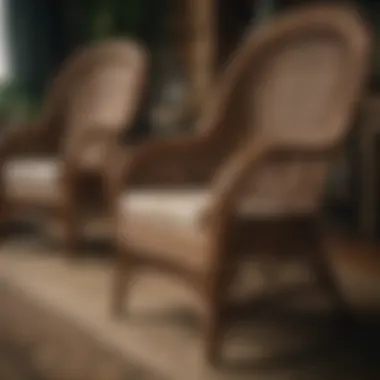

Key Characteristics: Starting fresh with a clean, intact frame is vital. It guarantees that the new wicker adheres properly and the structural integrity of the furniture is preserved.
Benefits: A well-prepped frame prevents future issues, such as uneven weaving or premature wear, leading to a sturdier final product.
The unique feature of preparing the frame is that it sets the stage for effective weaving. If the frame is unstable or not properly cleaned, trouble might arise. Therefore, taking the time to prepare correctly can pay off for years to come and avoid constant repairs.
Weaving Techniques
Once your frame is prepared, you can dive into the weaving techniques. This is where artistry meets functionality.
Key Characteristics: Different weaving styles can offer variety—from over-under techniques to more intricate patterns that enhance the furniture’s elegance.
Benefits: Choosing the right technique can make a visual statement while ensuring the piece remains comfortable and functional. Visual appeal is crucial, particularly if the furniture is for a high-traffic area.
One particular technique worth noting is the basket weave, which not only stands out aesthetically but also provides enhanced durability due to its tight construction. However, it may require skill and practice to master fully.
Finishing Touches
After the weaving is done, it’s time for the finishing touches. This phase is just as important as the previous ones and often involves selecting stains, paints, or protective coatings.
Key Characteristics: Finishing techniques can affect not just the look but also the lifespan of your wicker. A good finish can protect against UV damage and moisture.
Benefits: With a polished look, your wicker furniture is ready to shine again in your home, adding character and resilience.
The unique aspect here is customizing the finish to fit your decor. One must be cautious as some finishes can yellow over time or peel if not applied correctly. Choices made at this stage can profoundly impact not just appearance, but longevity as well.
"Every step in the wicker replacement process contributes to the final product; neglecting one can lead to a cascade of issues later on."
By thoughtfully approaching each of these steps—preparing the frame, employing effective weaving techniques, and applying suitable finishes—you ensure that your wicker stands the test of time, resonating an allure that is both traditional and contemporary.
DIY vs Professional Replacement
When it comes to replacing wicker, the debate between DIY and hiring a professional can often leave many homeowners scratching their heads. On one hand, diving into a DIY project can be incredibly rewarding, giving you a hands-on opportunity to breathe new life into your furniture. On the flip side, there are scenarios where calling in a pro may not just save time but also ensure a quality finish. So, how does one weigh these options? Let's explore the specifics.
When to Opt for Professional Help
Understanding when to seek professional assistance can be the difference between a successful project and a potential disaster. Consider these factors:
- Complexity of the Project: If the wicker furniture has intricate designs or unique patterns, replicating these may require a skilled hand. While some may feel confident taking on such challenges, it can be another story entirely when it comes to execution.
- Time Constraints: Life is often busier than one hopes. If you find yourself crunched for time or simply don’t wish to invest hours learning the ropes, hiring a professional could be the way to go. They typically have the experience to get the job done faster and more efficiently.
- Quality of Tools: Not every DIYer has access to the high-grade tools that professionals use. Inconsistent or poor-quality tools can hinder your work or lead to an inadequate finish.
- Desired End Result: Are you aiming for a flawless appearance, or are you comfortable with a more rustic look? If your goal is high-end aesthetics, professionals usually guarantee a level of precision and detail that can be tough to achieve independently.
"Sometimes, understanding your limitations and seeking help is the best step toward the quality you desire."
Cost Considerations
Cost can often be a deciding factor when it comes to choosing between DIY and professional replacement. Here are a few points to keep in mind:
- Initial Outlay: DIY projects can initially seem cheaper, but consider the hidden costs of materials, tools, and potential mistakes. If you purchase a hefty amount of material only to have it go to waste due to miscalculation or improper technique, you may end up spending more in the long run.
- Professional Rates: On the other side of the coin, professionals might charge a premium. Factors influencing their fees can include experience, geographic location, and the complexity of the project. It's wise to get quotes from multiple professionals.
- Long-term Investment: Sometimes, the price tag of professional work can pay off in terms of durability and aesthetics. High-quality replacement can extend the lifespan of your wicker furniture significantly, while DIY attempts might require additional fixes down the line.
- Personalization vs Standardized Costs: A contractor might provide standard service, but they may also offer options for heightened customization. This could increase cost but often pays off in satisfaction.
In sum, whether to undertake a DIY project or hire a professional hinges on your specific circumstances, capabilities, and goals. Weighing both sides carefully can lead to a more satisfying furniture replacement experience.
Sustainability in Wicker Replacement
Sustainability is an increasingly important consideration in today's world, and it carries weight in wicker replacement as well. As homeowners, designers, and DIY enthusiasts make choices about restoring or replacing furniture, understanding the implications of those decisions on the environment and society becomes paramount. This section dives into what sustainability entails for wicker replacement and why it matters.
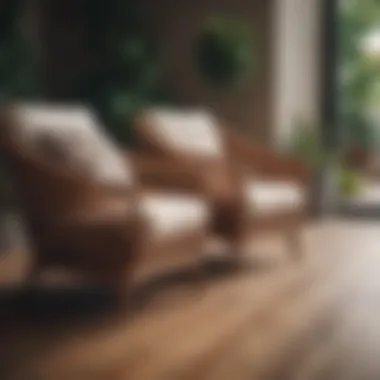

Ethical Sourcing of Materials
When replacing wicker, the materials you choose can either support sustainable practices or contribute to environmental exploitation. Ethical sourcing involves obtaining materials that are harvested responsibly, ensuring that they do not deplete natural resources or harm ecosystems.
- Natural Materials: Selecting organic fibers such as rattan or bamboo can minimize your ecological footprint. These plants grow quickly and can be sustainably harvested, allowing for a balance between human needs and environmental health.
- Recycled Materials: Increasingly, manufacturers are using recycled plastic and other repurposed materials in wicker production. This not only prevents waste from ending up in landfills but also decreases the demand for virgin materials, thereby protecting natural reserves.
- Fair Trade Practices: Understanding where and how your materials are sourced can shed light on the production processes. Supporting businesses that adhere to fair trade principles ensures that artisans receive fair wages and work under safe conditions.
Ultimately, choosing ethically sourced materials results in positive impacts on communities and environments alike. From one’s local setting to global ramifications, how materials are sourced counts for a lot in the grand scheme of sustainability.
Impact on the Environment
Replacing wicker must consider its environmental impact. This aspect offers insight into how the entire life cycle of materials contributes to broader ecological concerns. Here are key factors worth noting:
- Resource Consumption: The extraction, processing, and transportation of materials require energy and water. Sustainable practices aim to minimize these inputs, leading to a lower environmental toll.
- Chemical Usage: Wicker materials treated with harmful chemicals can leach into the environment, polluting air and water. Selecting eco-friendly finishes and dyes ensures safer outcomes for both the product and the environment.
- Waste Generation: During renovation, managing waste is crucial. Releasing broken or unusable wicker into landfills contributes to the environmental burden. Instead, consider upcycling or recycling what you can.
"Choosing sustainable materials doesn't just benefit the planet; it enhances your home with a story worth telling."
Through conscientious decisions in these areas, the wicker replacement process can benefit both individual consumers and the broader ecosystem. As this knowledge spreads among homeowners, designers, and other stakeholders, a culture of eco-friendly practices can flourish in the industry, blending aesthetics with responsibility.
Future Trends in Wicker Replacement
As the world evolves, so does the way we approach furniture care and restoration. Future trends in wicker replacement are not just about keeping up with styles but ensuring that we make sustainable, innovative choices that enhance the durability and aesthetic appeal of our wicker pieces. This topic is crucial as it reflects broader societal shifts towards environmental consciousness and design evolution. With homeowners and designers alike seeking to make informed choices, understanding these trends provides insight into how to adapt and preserve the charm of wicker.
Innovations in Materials and Techniques
The advent of technology in furniture design has ushered in a new era of materials used for wicker replacement. Today, options extend beyond traditional rattan and reed, venturing into composite materials and advanced synthetics that offer durability without sacrificing style. Recent advances in techniques also mean that homeowners can expect faster replacement processes, allowing them to bring their favorite pieces back to life with minimal downtime.
- Biodegradable materials are slowly gaining traction, adding an eco-friendly dimension to wicker replacement. Think about bamboo or reclaimed wood as options that not only provide resilience but are also aesthetically pleasing.
- 3D printing technology is starting to be explored for wicker forms, allowing custom designs that were once only a dream for artisans.
- Hybrid techniques combining hand weaving with machine assistance can also streamline the replacement process, ensuring a high-quality finish at a fraction of the time.
This mix of innovation and sustainability can redefine how we view traditional wicker. We don’t just restore furniture; we can enhance and modernize it while paying homage to its roots.
Design Trends to Watch
As we look forward, certain design trends are becoming apparent that shape the future of wicker replacement. These trends reflect not only aesthetic preferences but also cultural shifts in how we interact with our living spaces.
- Natural Aesthetics: There’s a growing inclination towards designs that emphasize simplicity and natural beauty. Using materials with organic textures can make spaces feel more grounded and serene.
- Mixing Materials: A increasing trend toward combining wicker with metals, woods, and fabrics is seen. This creates a dynamic contrast that can elevate a room's visual interest.
- Sustainable Styles: Eco-conscious choices are no longer a niche market. More consumers are prioritizing sustainable brands. Wicker replacement in this context often looks clean and fresh, with a focus on upcycled materials that tell a story.
- Color Innovations: Bright and bold colors are making a comeback. Expect to see more wicker pieces that incorporate vibrant dyes or paints, shifting away from conventional natural finishes.
"Incorporating wicker into modern design means embracing its versatility while being conscious of our environmental impact."
These trends point toward a future where wicker replacement continues to evolve not only as a practical necessity but as an integral part of home design’s rich tapestry. Homeowners, designers, and retailers all have a role to play in championing these new trends and ensuring that wicker remains a vibrant part of modern interiors.
The End
As we draw our exploration of wicker replacement to a close, it’s crucial to highlight its significance not just as a maintenance task but as an endeavor that can elevate the overall appeal and functionality of your wicker furniture. Wicker is not merely a style; it's a testament to craftsmanship and design that deserves care and attention.
This article has provided a thorough overview of various aspects related to wicker replacement, covering historical insights, material choices, and practical approaches for anyone looking to restore or enhance their wicker pieces. One may argue that knowing when to replace rather than restore can save one from further costs down the road, engaging in the cyclical dance of repairs.
From learning the warning signs indicating the need for replacement to distinguishing between natural and synthetic materials, each detail plays a pivotal role. But perhaps the most salient takeaway is the notion that wicker furniture, when maintained properly, can provide years of enduring beauty and utility.
In summary, being informed empowers homeowners and designers alike to make educated choices, ensuring the longevity of these cherished items. Replacing wicker can transform not just your furniture but also the atmosphere it creates, allowing your space to breathe new life.
Recap of Key Points
- Historical Overview: Wicker’s rich history reflects its enduring appeal.
- Maintenance Necessity: Regularly checking for damage ensures longevity.
- Material Choices: Natural options offer traditional charm while synthetic materials provide modern durability.
- DIY vs Professional Replacement: Understanding when to tackle the job yourself vs when to hire an expert can lead to cost-effective decisions.
- Sustainability Considerations: Ethically sourced materials are essential in today’s eco-conscious market.
- Future Trends: Innovations continue to evolve, ensuring that wicker furniture remains relevant and stylish.
Final Thoughts on Wicker Replacement
Wicker replacement is more than just a repair job; it embodies a commitment to preserving a tradition while marrying functionality with beauty. The journey through understanding the importance of maintenance, choosing the right materials, and mastering replacement techniques not only breathes new life into furniture but also nurtures our connection to design heritage.
As the world becomes increasingly digital, traditional crafts like wicker weaving remind us of the beauty of authenticity. Engaging in replacement practices with care contributes to sustainable living and inspires creativity in home design.
Remember, each time you choose to restore or replace wicker, you are not merely making a practical decision; you are investing in an art form that tells a story, uniquely yours. Whether you’re a designer looking to make a statement or a homeowner simply seeking to maintain your sanctuary, the lessons gleaned in this article serve as a roadmap to achieving your desired outcome.




